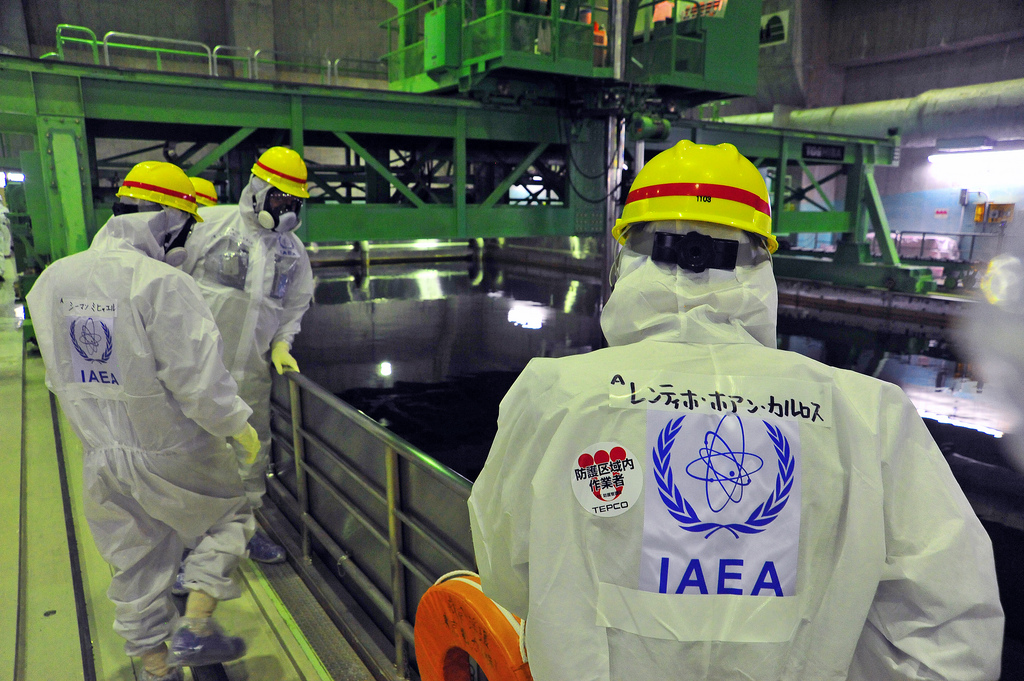TEPCO hopes to have ice wall completed by end of year
10/19/2015 / By Greg White

Tokyo Electric Power Co (TEPCO) plans to erect a frozen soil barrier around the Fukushima nuclear facility by the end of the year. The goal is to find a way to resolve the contaminated water issue by the 2020 Olympics.
Finding a solution to the water flow problem at the Fukushima site is just one of many problems TEPCO must resolve before the 2020 Olympics, and time is not on their side. Among the many tasks at hand, TEPCO must find a way to remove radioactive debris inside the nuclear reactors. As of right now, no technology exists that can accomplish this feat. (1)
The toil of the soil
Approximately 300 metric tons of water flows into the reactor buildings each day. TEPCO has struggled to decontaminate the site as a buildup of contaminated water floods the area. Among all the problems down at the power planet, water management has been arguably the most difficult; a recurring problem that just won’t subside more than four years after the accident. (1)
The ice wall will be nearly 30 meters deep and 1,500 meters long. The soil, frozen at -30° C a meter, is intended to create a wall around the wrecked reactors. The hope is the wall will prevent groundwater from flooding the reactor basements. (1)
The ice wall sounds good in theory but has failed in practice. Back in August of 2014, TEPCO admitted that a piece of the ice wall between unit the #2 turbine building and the cable tunnel was not working. Although 400 tons of ice were injected into the ground, it failed to lower the temperature enough to freeze the soil. (2)
TEPCO tries to regain public trust
“In the last half-year we have made significant progress in water treatment,” Akira Ono, chief of the Fukushima Dai-Ichi plant, said Friday during a tour of the facility north of Tokyo. The frozen wall, along with other measures, “should be able to resolve the contaminated water issues before the Olympic games. (1)
Despite this so called progress, the Japanese public has grown weary of claims made by TEPCO. The company has consistently failed to demonstrate any competency in managing the catastrophe. TEPCO is currently testing the freezing system, hoping to have the barrier completed by the end of December.
TEPCO has only found ways to manage, rather than prevent, water overflow at the Fukushima site. The groundwater entering into the reactors is purified and stored in barrels. Their are about 1,000 barrels at the Fukushima site, each of which holds 1,000 tons of water.
As would be expected, the 1,000 barrels are taking up space. In an effort to make room, TEPCO leveled a bird sanctuary near the facility to store the barrels. The government will not allow TEPCO to release the decontaminated water into the ocean. No one is sure what to do with the purified groundwater.
Prime Minister Shinzo Abe promised in 2013 that the government would help resolve the water management problem at Fukushima before the 2020 Olympics. Nevertheless, hundreds of tons of water continue to be pumped into the reactors to keep the nuclear fuel cool. Meanwhile, radioactive water from other parts of the site continues to bleed into the sea. Tainted water from the drainage system has spilled into the ocean nine times. (1)
To make matters worse, no one is sure whether the ice wall will actually work. It is an experiment in the making. The proposed ice wall has never been developed on such a large scale, Lake Barrett, former head of the U.S. Department of Energy’s Office of Civilian Nuclear Waste Management, told sources.
“Some of these areas may have different freezing and sealing capabilities,” he said. “These types of problems were encountered when Tepco tried and failed to seal the seawater trenches by freezing.” (1)
Sources include:
(1) hBloomberg.com
(2) CleanTechnica.com
Submit a correction >>
Tagged Under:
FukushimaWatch
This article may contain statements that reflect the opinion of the author
RECENT NEWS & ARTICLES
COPYRIGHT © 2017 FUKUSHIMAWATCH.COM
All content posted on this site is protected under Free Speech. FukushimaWatch.com is not responsible for content written by contributing authors. The information on this site is provided for educational and entertainment purposes only. It is not intended as a substitute for professional advice of any kind. FukushimaWatch.com assumes no responsibility for the use or misuse of this material. All trademarks, registered trademarks and service marks mentioned on this site are the property of their respective owners.




















